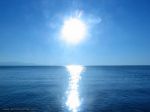
QUALIFIED MEMBERS OF THE ENGINE DEPARTMENT (Q.M.E.D.) Trained in all crafts necessary to engine maintenance (welding, refrigeration, lathe operation, die casting, electricity, pumping, water purification, oiling, evaluating engine gauges, etc.) Usually wa ...

